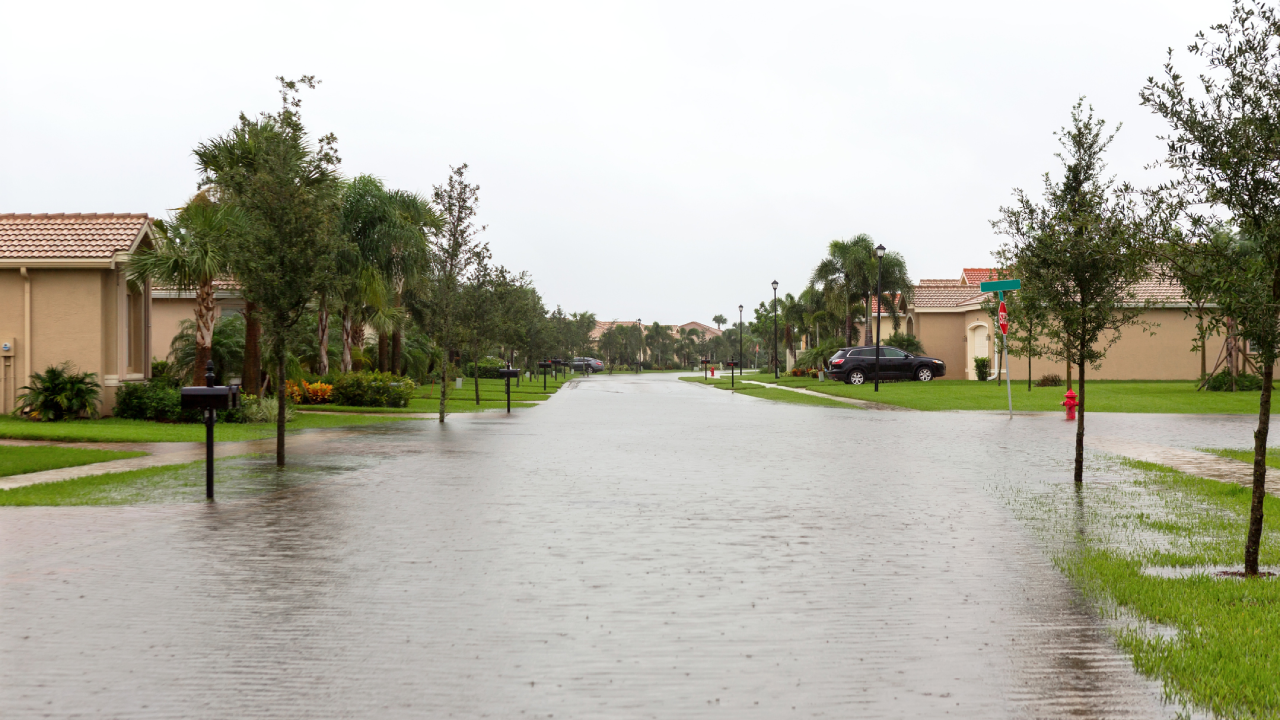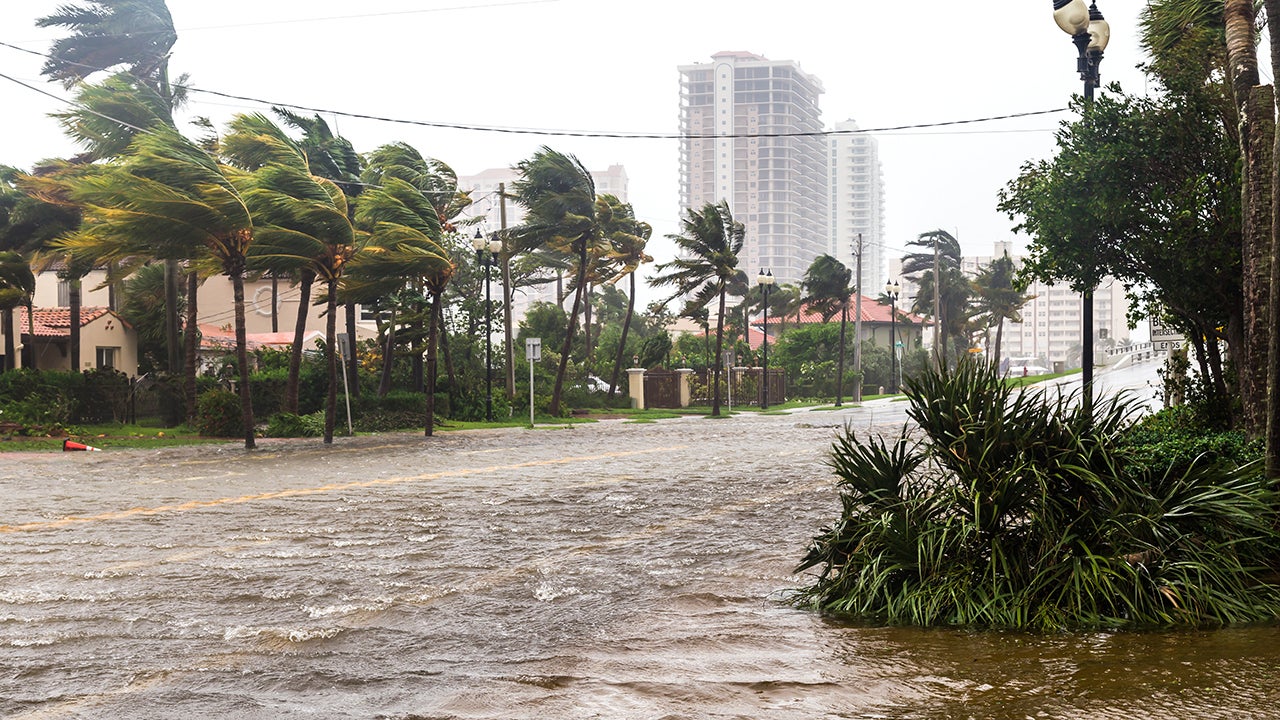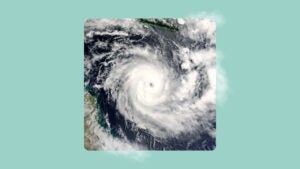Experts say the 2024 hurricane season could break records. Here’s how to prepare

The 2024 Atlantic hurricane season is shaping up to be one of the most active on record — and now is the time for homeowners to start preparing. Check your local building code and your insurance policies before June 1, and consider improving your home’s fortifications against wind, rain and flooding.
Will 2024 be a bad hurricane season?
Experts on the Tropical Weather and Climate Research Team at Colorado State University (CSU) are predicting an extremely active Atlantic hurricane season in 2024. CSU’s annual seasonal forecast, released on April 4, 2024, predicts 23 named tropical storms — this is nearly 60 percent higher than the 1991-2020 seasonal average of 14.4 named storms. Of these storms, CSU predicts that 11 will develop into hurricanes, and five will become major hurricanes — Category 3, 4 or 5 on the Saffir-Simpson Hurricane Wind Scale.
By comparison, none of the last three hurricane seasons have seen as many as 23 named storms. The last year with as many storms was 2020, which tied with 2005 as the worst hurricane season on record. In other words, 2024 is set up to potentially become either the second-worst or worst hurricane season on record. In fact, this is the highest-ever hurricane prediction that CSU has ever issued.
CSU researchers — who have been releasing annual hurricane forecasts since 1984 — say they have above-average confidence in this April outlook. While there’s still plenty of time for conditions to shift before the hurricane season starts on June 1, it’s best to prepare now for an extremely active season.
2024 hurricane season predictions
CSU is predicting that 2024 hurricane activity will be about 160 percent of the average hurricane season, with a 62 percent probability of a major hurricane making landfall for the entire U.S. coastline.
| Forecast | 2024 Prediction | 1991-2020 Average |
|---|---|---|
| Named storms | 23 | 14.4 |
| Hurricanes | 11 | 7.2 |
| Hurricane days | 45 | 27 |
| Major hurricanes | 5 | 3.2 |
| Major hurricane days | 13 | 7.4 |
2024 vs. previous hurricane seasons
The 2024 hurricane season will likely be the most severe since 2020 and could even exceed 2020’s record-breaking activity, as recorded in the National Hurricane Center and Central Pacific Hurricane Center’s annual Tropical Cyclone Reports (TCRs).
| Forecast | 2024 prediction | 2023 | 2022 | 2021 | 2020 |
|---|---|---|---|---|---|
| Named storms | 23 | 19 | 14 | 21 | 30 |
| Hurricanes | 11 | 7 | 9 | 7 | 14 |
Future hurricane predictions
CSU’s April outlook is just the first look at the 2024 hurricane season. As hurricane season develops, CSU’s Tropic Weather and Climate Research team will release updates on:
- June 11
- July 9
- August 6
The National Oceanic and Atmospheric Administration (NOAA) will release its 2024 hurricane outlook on May 23rd. Throughout hurricane season, you can visit the National Hurricane Center’s (NHC) website for live forecasts and hurricane tracking.
Where will hurricane season be most severe?
Hurricane season will likely be most severe along the Gulf Coast, in states like Texas, Louisiana, Mississippi and Alabama. Compared to the historical average landfall probability of 27 percent, CSU researchers predict that the Gulf Coast has a 42 percent chance of landfall during the 2024 hurricane season. The East Coast from the Florida peninsula north has a 34 percent chance of landfall in 2024. For a more granular look, you can estimate the hurricane risk associated with your area using FEMA’s National Risk Index.
The severity of hurricane season doesn’t just depend on where hurricanes make landfall — it also depends on the strength of the built environment. Researchers at the Insurance Institute for Business and Home Safety (IBHS) recently released the 2024 Rating the States Hurricane Coast report, which found serious shortcomings in building codes in hurricane-prone states like Texas, Mississippi and Alabama.
“Building codes are an absolutely vital tool in keeping communities healthy and resilient,” says Dr. Anne Cope, chief engineer at IBHS. “We see a direct correlation between mortgage delinquency rates after landfalling hurricanes and a lack of building code.”
Poor building codes also have the potential to increase the financial impacts of hurricane season on insurance companies — which then pass on their financial risk to consumers in the form of steep insurance premiums.
| Avg. full coverage auto insurance premium | Avg. home insurance premium for $300K in dwelling | 2024 building code score (IBHS) | |
|---|---|---|---|
| Florida | $3,579 | $5,770 | 95 |
| Louisiana | $3,625 | $5,709 | 91 |
| Mississippi | $2,095 | $4,289 | 44 |
| Texas | $2,637 | $4,039 | 33 |
| Alabama | $2,116 | $2,969 | 30 |
| North Carolina | $1,713 | $2,535 | 85 |
| South Carolina | $1,842 | $2,320 | 92 |
| Georgia | $2,718 | $2,057 | 67 |
| Rhode Island | $2,875 | $1,983 | 87 |
| New York | $3,751 | $1,710 | 67 |
| Connecticut | $2,280 | $1,657 | 90 |
| Massachusetts | $1,667 | $1,606 | 77 |
| Maryland | $2,582 | $1,599 | 77 |
| Virginia | $1,892 | $1,391 | 96 |
| Maine | $1,520 | $1,154 | 46 |
| New Jersey | $2,239 | $1,102 | 92 |
| Delaware | $2,414 | $1,026 | 23 |
| New Hampshire | $1,700 | $941 | 47 |
To check the local building code in your area, head to InspectToProtect.org and type in your address or ZIP code to see how well your local building code may protect against hurricane season. And if your area’s building code is weak? “Get noisy,” Cope says. She points to Mobile and Baldwin Counties in Alabama, where a grassroots movement following Hurricane Katrina led to the adoption of more robust building code than the rest of the state, which got a failing grade in this year’s study.
How homeowners can prep for hurricane season
While building code and meteorological predictions can suggest areas where hurricane season may hit hardest, it’s up to individual homeowners to prepare their property for the season.
Jake Sorber, research project scientist at IHBS, says the main objective of hurricane home prep is to keep wind out of the home. The key to preventing hurricane damage is maintaining a strong building envelope — that is, the structural components (walls, roof, foundation) that make up your home’s shell. When hurricane winds breach that envelope — through a crack, a broken window or a crushed garage door — the entire structure weakens and pressure can build up on the roof. “The roof is the first line of defense,” Sorber says. “If you can keep your roof on your home, then you’re in better shape.”
Use the follow steps as your pre-season home improvement checklist:
- Roof inspection: Get your roof inspected before June 1 to resolve any issues, such as loose shingles or poor sealing.
- Garage door testing: Check your garage door for a wind compliance label. If the door isn’t rated for hurricane winds, consider installing a new door with a wind rating that’s sufficient for hurricane winds.
- Seal gaps and cracks: Minor cracks in your home’s exterior can become major problems when subjected to hurricane winds.
- Purchase and install hurricane shutters: Windows are weak points in a hurricane. Don’t wait till the day of the storm to nail up plywood. Invest early in hurricane shutters designed to withstand wind.
On hurricane day, clear your yard and close all interior doors. “Bring stuff inside,” says Cope. “That big wheel, those potted plants, the lawn furniture — move that inside so it’s not blowing around.” All of these efforts, she says, are about giving your home “the best fighting chance” during hurricane season.
Home insurance for hurricane season
Before June 1, check your home insurance policy to see what’s covered — and what may not be.
“Understanding what kind of perils your home insurance policy will and won’t cover is vital,” says Shannon Martin, a licensed insurance agent and Bankrate analyst. “Before hurricane season starts, review your insurance policy for coverage gaps, and make sure you are comfortable with your current deductible.” If you’re not sure how to read your policy, or if you think you might need more coverage, talk to your insurance agent to ensure that you’ve got the right coverage.
Martin warns that putting off your policy review can be problematic: “Once a storm is named, many carriers put policies on a moratorium and don’t allow coverage or deductible changes until days after the event has passed.”
It is a good idea to stock up on basic supplies like nails, plywood and roof tarp. Homeowners are required by insurers to conduct reasonable repairs to mitigate further damage. These supplies are usually overpriced and out of stock after catastrophic events, so being proactive can save you money.— Shannon Martin, Bankrate Insurance Analyst
Auto insurance for hurricane season
While your home may be your focus as hurricane season approaches, don’t forget about your car. Vehicles are vulnerable to damage from wind, hail and flood caused by hurricanes. If your car’s insurance policy includes comprehensive coverage, you’ll typically be covered for hurricane damage such as:
- Flooding
- Hail
- Wind
- Falling objects or flying debris
Keep in mind: you must have comprehensive coverage on your policy for your insurance company to pay out for any of these events. If you only have state minimum coverage, or if your policy includes collision but not comprehensive coverage, you won’t be able to file a claim.
If you don’t already have comprehensive coverage, don’t wait to get it. Insurance companies often institute moratoriums on auto insurance as well in the lead up to a major weather event.
Do you have enough insurance coverage for hurricane season?
Review your insurance policies carefully before hurricane season to be sure that you have the coverage you need. For your home insurance policy, check the coverage limits and any associated deductibles on your policy for windstorm damage for your dwelling, other structures, personal property and living expenses.
Be sure to check for the following:
- Which hurricane-related perils does your insurance policy cover, and which are excluded? For example, wind and wind-driven rain are typically covered, while flooding and mold damage generally aren’t.
- Is your personal property covered at actual cash value (ACV) or replacement cost value (RCV)? Most standard policies only include ACV for personal belongings.
- Do you need a separate flood insurance or windstorm insurance policy?
Take an inventory of your property before hurricane season begins so that you’re prepared for any potential claims down the road. You may also want to use the Emergency Financial First Aid Kit (EFFAK) created by FEMA and Operation HOPE to organize your key financial information, including insurance policy details, prior to hurricane season.
Frequently asked questions
-
-
Climate researchers at Colorado State University (CSU) predict 23 named storms in the 2024 Atlantic hurricane season. Of these, they predict that 11 will develop into hurricanes and five will reach major hurricane status (Category 3, 4 or 5).
-
The first name for the 2024 hurricane season is Alberto. The World Meteorological Organization (WMO) uses six lists of tropical storm names on a six-year cycle. Each storm name slated for use in 2024 was last used in 2018.
Other hurricane names for 2024 include: Beryl, Chris, Debby, Ernesto, Francine, Gordon, Helene, Isaac, Joyce, Kirk, Leslie, Milton, Nadine, Oscar, Patty, Rafael, Sara, Tony, Valerie and William. If there are more than 21 tropical storms in the 2024 Atlantic hurricane season, the WMO will turn to its supplemental list of names, starting with Adria.
-
Climate researchers predict an extremely active Atlantic hurricane season in 2024 for two major reasons: unusually warm surface waters in the Atlantic, which act as potent fuel for hurricanes, and a developing La Niña condition in the equatorial Pacific as early as May or June. The cool La Niña waters in the Pacific could reduce vertical wind shear across the Atlantic, causing stronger storms.
-
How much insurance you need will depend on your home characteristics, your financial circumstances and your comfort with risk. As a baseline, most insurance experts recommend purchasing enough coverage to repair or rebuild your home and replace your belongings in the event of a total loss. Depending on where you live, you may also need to purchase a separate windstorm or flood insurance policy in order to insure your home against all the perils associated with hurricane season.
-
Methodology
Bankrate utilizes Quadrant Information Services to analyze April 2024 rates for all ZIP codes and carriers in all 50 states and Washington, D.C. Rates are weighted based on the population density in each geographic region.
Auto
Quoted rates are based on a single, 40-year-old male and female driver with a clean driving record, good credit and the following full coverage limits:
- $100,000 bodily injury liability per person
- $300,000 bodily injury liability per accident
- $50,000 property damage liability per accident
- $100,000 uninsured motorist bodily injury per person
- $300,000 uninsured motorist bodily injury per accident
- $500 collision deductible
- $500 comprehensive deductible
To determine minimum coverage limits, Bankrate used minimum coverage that meets each state’s requirements. Our base profile drivers own a 2022 Toyota Camry, commute five days a week and drive 12,000 miles annually.
These are sample rates and should only be used for comparative purposes.
Home
Quoted rates are based on married male and female homeowners with a clean claim history, good credit and the following coverage limits:
- Coverage A, Dwelling: $300,000
- Coverage B, Other Structures: $30,000
- Coverage C, Personal Property: $150,000
- Coverage D, Loss of Use: $60,000
- Coverage E, Liability: $500,000
- Coverage F, Medical Payments: $1,000
The homeowners also have a $1,000 deductible, a $500 hail deductible and a 2 percent hurricane deductible (or the next closest deductible amounts that are available) where separate deductibles apply.
These are sample rates and should be used for comparative purposes only. Your quotes will differ.
You may also like

Florida flooding focuses attention on uninsured Americans

When is hurricane season in Florida?

12 ways to avoid hurricane damage



